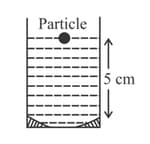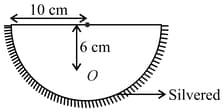Focal length is equal to half of the
Important Questions on Reflection of Light
| Column 1 | Column 2 | ||
| (A) | (a) | Convex mirror | |
| (B) | (b) | Concave mirror | |
| (C) | (c) | Real image | |
| (D) | (d) | Virtual image |
The radius of curvature of a converging mirror is . At what distance from the mirror should an object be placed so as to obtain a virtual image?

Which of the following statements is not true in reference to the diagram shown above?
A student holding a mirror in his hand, directed the reflecting surface of the mirror towards the Sun. He then directed the reflected light on to a sheet of paper held close to the mirror.
Which type of mirror does he have?
An object of height is kept at a distance of from the pole of a diverging mirror. If the focal length of the mirror is , the height of the image formed is ____.

In which of the following is a concave mirror is used?
What should he do to burn the paper?
A hemispherical glass body of radius 10 cm and refractive index 1.5 is silvered on its curved surface. A small air bubble is 6 cm below the flat surface inside it along the axis. The position of the image of the air bubble made by the mirror is seen :

| Object pin | Convex Lens | Convex Mirror | Image Pin |
| 22.2 cm | 32.2 cm | 45.8 cm | 71.2 cm |
(Graphs are drawn schematically and are not to scale)

For the diagram shown, according to the new Cartesian sign convention the magnification of the image formed will have the following specifications.
A student holding a mirror in his hand, directed the reflecting surface of the mirror towards the Sun. He then directed the reflected light on to a sheet of paper held close to the mirror.
Will he be able to determine the approximate value of focal length of this mirror from this activity ? Give reason and draw ray diagram to justify your answer in this case.

